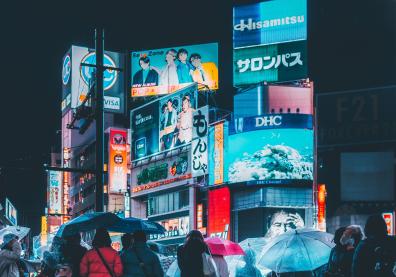Ambient music and representations of the Japanese urban environment

- Matthew James Stefanyszyn (School of Oriental and African Studies): Toshi Kankyō Ongaku: visions of nature in urban environmental music
- Kenjirô Muramatsu (Université Jean Moulin Lyon 3): Hosono Haruomi's turn to ambient music in the 1980s: "Terre à terre" as a mise en abîme of the urban environment
Speaker: Cyrian Pitteloud (University of Lille)
Presentation
Contemporary Japanese popular culture is attracting increasing attention from both the general public and academia. While there is already a body of literature, particularly in Japanese and English, devoted to manga and animated films, for example, other fields such as music and urban cultures are still little addressed. What's more, the objects studied, often examined in terms of their content or the production and consumption practices from which they derive directly, are generally little understood in terms of cross-cultural approaches or cultural history. This state of the art reveals the need to intensify exchanges between disciplines, fields of study and academic areas. In order to develop research on contemporary Japanese popular culture in France and open up new collaborative perspectives, it seems appropriate to amplify transnational dialogue. To this end, our first intention is to offer an online lecture series on the subject of contemporary Japanese popular culture studies. Each session, organized around a specific theme, is intended to present the work of two researchers from different academic areas, and to provide a space for discussion between them and with the public.
As part of the "Populations japonaises" project, the aim is to link the content of the lectures to the social issues of contemporary Japan, and to identify, through popular cultural production and practices, the power relations at play within Japanese society. We need to consider that the cultural production and practices of a given community, in addition to reflecting and helping to produce the context with which it is grappling and composing normative organizational frameworks, can also form a lever for asserting specific "other" characters. Examine the dynamics of group cohesion around the consumption and (re)production of specific products or messages; consider how gendered, generational and class representations are perpetuated or challenged; Inspecting the link between local practices and their national (in)visibility, while anchoring the analysis in the social, political, economic and, more broadly, cultural context of the period in question, enables us to grasp where some of the dynamics of consolidation of normative frameworks and (re)mediation of myths lie with regard to contemporary Japan, and then to identify in reaction what the strategies of resistance may be. Our proposal, as part of the "Populations japonaises" research project, aims to take a cross-cutting approach to the various questions that this project raises in general.
The second edition of the cycle is part of a desire to deepen the exploration of the various manifestations of contemporary Japanese culture. The planned lines of discussion cover a wide range of fields: the mechanisms of appropriation and re-creation in imaginary universes, the representation of the urban environment through ambient music, the use of the sporting body as a tool of individual representation, and post-war advertising. These themes, supported by multidisciplinary approaches, will enable us to explore the cultural, social and artistic dynamics that have helped shape contemporary Japan.
Next sessions
The sporting body as a tool of individual and collective representation in contemporary Japan
Thursday 09/05 10am-12.30pm
- Kazuma Takezaki (Meiji University): Recovering masculinity after the Second World War in Japan: the emergence of bodybuilding in the 1950s
- Fabienne Duteil (Bordeaux Montaigne University): Representations on Instagram of the bodies of Japanese students enrolled in sports clubs: The body as a communicative tool of emotion and action
Discussant: Guillaume Ivanka (Institut national des langues et civilisations orientales)
Consumption and advertising in post-war Japan
Wednesday 05/07 10am-12.30pm
- Aoi Katakura (Tokyo Metropolitan University): Packaging Design of the Omake culture of Japanese confectionery: the small paper boxes of Japanese toffees
- Elise Voyau (Institut national des langues et civilisations orientales) :Exploring the representation of women in Japanese commercial photography of the 1960s and 1970s
Discussant: Cécile Laly (Kyoto Seika University)
Past sessions
Processes of appropriation and re-creation in contemporary Japanese imaginary worlds
Friday 19/01 1:30pm-4pm
- Ryan Scheiding (Georgia Institute of Technology): Monsters, time travel and fantasy worlds: Collective memory and allegorical representations of Hiroshima and Nagasaki in Japanese video games
- Jessy Escande (Osaka University): Nuances of cultural appropriation in Japanese fantasy, from creative borrowings to the commodification of foreign cultures
Discussant: Romain Lebailly (Université Paris 1 Panthéon-Sorbonne)